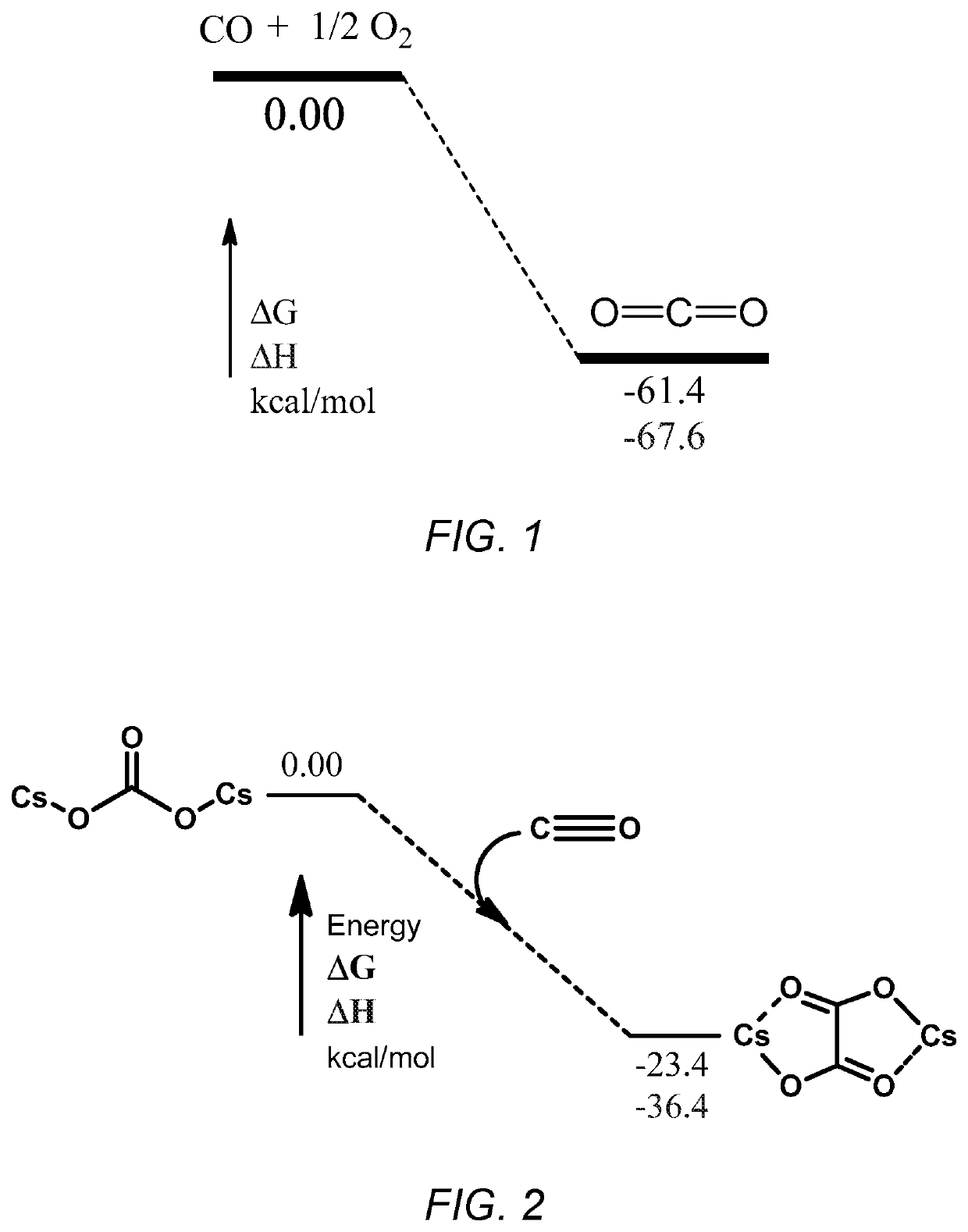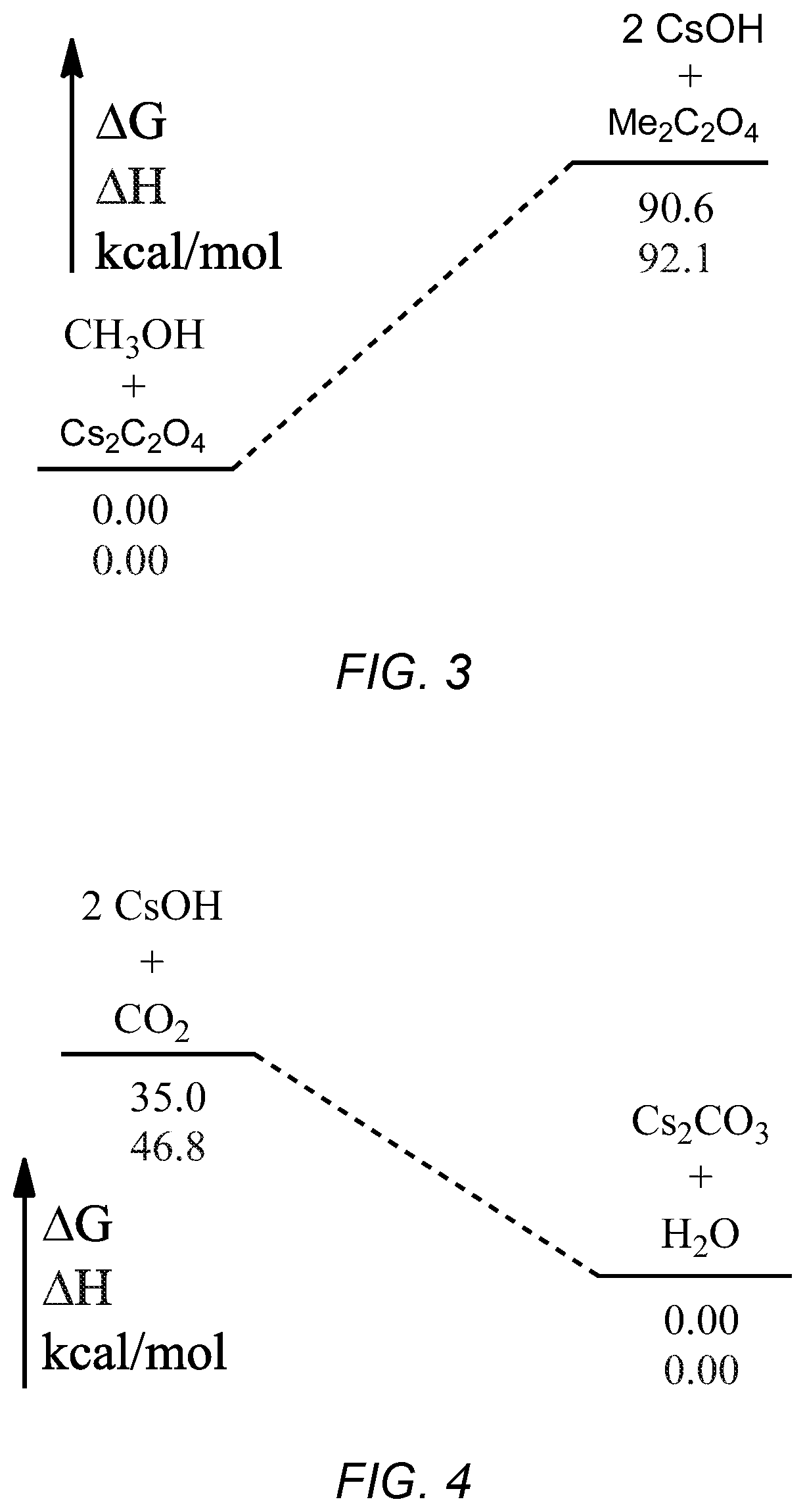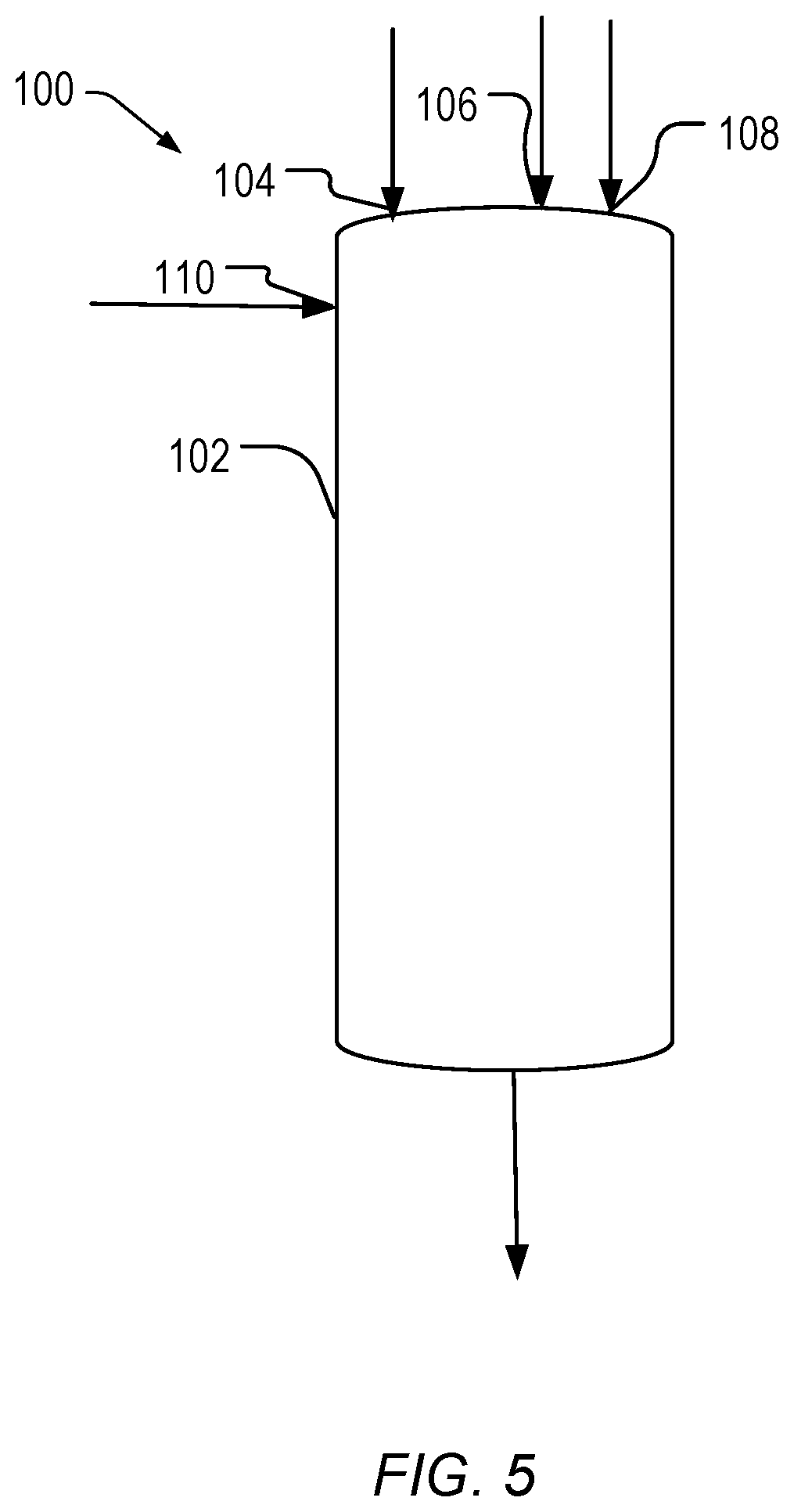Production of cesium oxalate from cesium carbonate
- Summary
- Abstract
- Description
- Claims
- Application Information
AI Technical Summary
Benefits of technology
Problems solved by technology
Method used
Image
Examples
example 1
One-Step Process for the Preparation of Dimethyl Oxalate with CO2, CO, and Cs2CO3 / SiO2 or Al2O3
[0062]Alumina and / or silica was dried in a vacuum oven overnight at 175° C. A 1:1 mass ratio of Cs2CO3 (0.5 g) and alumina or silica (0.5 g) were placed in a high pressure reactor (100 mL Parr reactor (Parr Instrument Company, USA)) under inert conditions. CO2 (25 bar, 2.5 MPa) was charged and the reactor heated to 325° C., maintained at 325° C. and cooled to room temperature. CO (20 bar, 2 MPa) was then charged and the mixture was stirred for 1-2 hour at 325° C. and then cooled 25° C. and depressurized. The reaction mixture contained cesium oxalate, cesium formate, and cesium bicarbonate. Methanol (20 mL) was then added to the reactor, and the reactor was pressurized with CO2 (35 bar, 3.5 MPa). The mixture was heated to 150° C., stirred overnight, and then depressurized. The remaining solvent (methanol) was removed by evaporation under vacuum. The product composition was analyzed and ide...
example 2
Two-Step Process for the Preparation of Dimethyl Oxalate with CO2, CO, and Cs2CO3 Cs2CO3 / SiO2 or Al2O3
[0063]Alumina and / or silica was dried in vacuum oven overnight at 175° C. A 1:1 mass ratio of Cs2CO3 (0.5 g) and alumina or silica (0.5 g) were placed in a 100 mL Parr reactor in the glove box. CO2 (25 bar, 2.5 MPa) was charged and the reactor heated to 325° C., maintained at 325° C. and cooled to room temperature. CO (20 bar, 2 MPa) was were then charged and the mixture was stirred for 1-2 hour at 325° C. and then cooled to room temperature (about 25° C.) and depressurized. The reaction mixture contained cesium oxalate, cesium formate, and cesium bicarbonate and was removed from the reactor. A solution of methanol (20 mL) and the crude cesium oxalate was add to the reactor, and the reactor was pressurized with CO2 (35 bar, 3.5 MPa). The mixture was heated to 150° C., stirred overnight, and then depressurized. The remaining solvent (methanol) was removed by evaporation under vacuum...
example 3
One-Step Process for the Preparation of Dimethyl Oxalate with CO2, CO, and Cs2CO3 Cs2CO3 / SiO2 or Al2O3 and Charcoal
[0064]Activated charcoal was vacuum dried overnight at 90° C. The dried activated charcoal was mixed with equal amount of engineering silica (H-53), pre-calcined for two hours at 400° C. under inert conditions (e.g. glove box). The resultant charcoal / silica mixture was used as a catalyst support for the reaction catalyst, cesium carbonate. Cesium carbonate (0.8 g) with equal amount of charcoal and silica (0.2 g each) was placed in a high pressure reactor (100 mL Parr (Parr Instrument Company, U.S.A.) reactor. CO2 (45 bar, 4.5 MPa) was charged and the reactor heated to 325° C., maintained at 325° C. and cooled to room temperature to form the adduct. CO (20 bar, 2 MPa) was then charged and the mixture was stirred for 1-2 hour at 325° C. with agitation, and then cooled to room temperature by applying cool air to the reactor. The reactor was cooled to 25° C. and depressuriz...
PUM
| Property | Measurement | Unit |
|---|---|---|
| Temperature | aaaaa | aaaaa |
| Temperature | aaaaa | aaaaa |
| Temperature | aaaaa | aaaaa |
Abstract
Description
Claims
Application Information
 Login to View More
Login to View More - R&D
- Intellectual Property
- Life Sciences
- Materials
- Tech Scout
- Unparalleled Data Quality
- Higher Quality Content
- 60% Fewer Hallucinations
Browse by: Latest US Patents, China's latest patents, Technical Efficacy Thesaurus, Application Domain, Technology Topic, Popular Technical Reports.
© 2025 PatSnap. All rights reserved.Legal|Privacy policy|Modern Slavery Act Transparency Statement|Sitemap|About US| Contact US: help@patsnap.com



